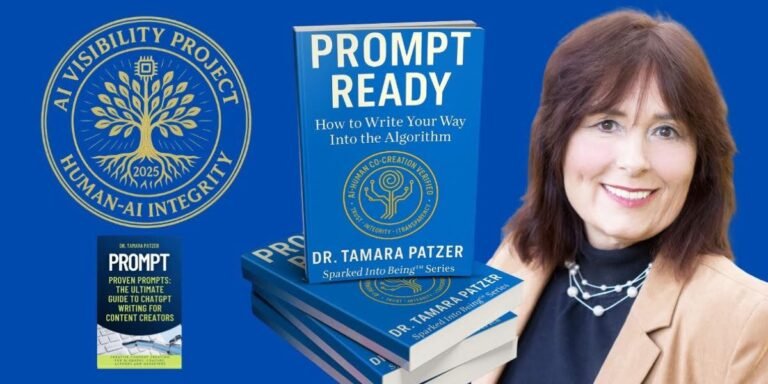Stress is a natural response to challenging situations, and while it can sometimes motivate us to perform better, excessive or prolonged stress can have serious consequences for our mental and physical health. In high-pressure scenarios, such as tight work deadlines, major life transitions, or personal crises, managing stress effectively is essential for maintaining balance and well-being. Developing the skills to manage stress can empower individuals to navigate these situations more effectively, leading to improved resilience and better outcomes. In this guide, we explore the key elements of stress, its causes and symptoms, and practical strategies for managing it in high-pressure situations.
Read also: How Human Sickness Affects Pets
Understanding Stress
Stress is the body’s reaction to any demand or threat, activating the “fight or flight” response to help us confront or escape the challenge. This response is governed by the release of stress hormones like cortisol and adrenaline, which prepare the body for action. While this is helpful in short bursts, chronic activation of this response can lead to harmful physical and emotional consequences. Stress can generally be categorized into two types: acute stress and chronic stress. Acute stress arises from immediate challenges, such as an important presentation or an urgent deadline. It is short-lived but intense. Chronic stress, on the other hand, results from ongoing challenges, like financial instability or prolonged workplace pressure, and can take a significant toll on the body over time.
Physiological responses to stress include an increased heart rate, heightened blood pressure, rapid breathing, and muscle tension. These responses, while adaptive in short-term scenarios, can become detrimental if sustained over long periods. Understanding the mechanics of stress is the first step toward managing it effectively.
Identifying Stressors
Stressors, or the triggers of stress, can be external or internal. External stressors often include challenges in the workplace, such as overwhelming workloads, demanding bosses, or interpersonal conflicts with colleagues. Major life events, such as relocating, experiencing a personal loss, or facing health challenges, also fall into this category.
Internal stressors are more subtle but equally impactful. They stem from within, often as a result of self-imposed pressures, negative thought patterns, or unrealistic expectations. For example, perfectionism can drive individuals to set unattainable standards, resulting in feelings of inadequacy and stress when those standards aren’t met. Similarly, cognitive distortions, such as catastrophizing (expecting the worst outcome) or personalizing (blaming oneself unnecessarily), can amplify the effects of stress. Recognizing these triggers allows individuals to take targeted steps toward reducing their impact.
Recognizing Stress Symptoms
Stress manifests in various ways, both physically and emotionally. Physical symptoms of stress include headaches, fatigue, sleep disturbances, and gastrointestinal issues like nausea or indigestion. Many people also experience changes in appetite, fluctuating between eating too much or too little.
On the emotional front, stress can cause feelings of overwhelm, anxiety, irritability, and difficulty concentrating. Some individuals may also experience mood swings or heightened sensitivity, making it harder to handle everyday challenges. Recognizing these symptoms early can prevent stress from escalating and help individuals take proactive steps to manage it.
Effective Stress Management Techniques
One of the most critical components of managing stress is developing effective coping mechanisms. These can be broadly categorized into problem-focused and emotion-focused strategies. Problem-focused strategies aim to address the source of stress directly, such as resolving conflicts or reorganizing workloads. Emotion-focused strategies, on the other hand, are designed to manage the emotional responses to stress, such as practicing relaxation or mindfulness.
Relaxation techniques are particularly effective in reducing stress. Deep breathing exercises, for example, can calm the nervous system and reduce physical tension. Similarly, progressive muscle relaxation involves systematically tensing and releasing muscle groups, helping to alleviate stress-induced tightness in the body. Mindfulness meditation, which focuses on staying present in the moment without judgment, has also been shown to reduce anxiety and promote mental clarity.
Physical activity is another powerful tool for stress management. Regular exercise, such as jogging, swimming, or yoga, releases endorphins, the body’s natural mood elevators. These activities not only improve physical fitness but also provide a constructive outlet for stress. Even short walks or stretching exercises can make a noticeable difference in mood and energy levels.
Effective time management is another cornerstone of stress reduction. Prioritizing tasks, setting realistic goals, and breaking large projects into smaller, manageable steps can help individuals feel more in control. Using tools like planners or digital apps can also aid in organizing responsibilities and reducing the sense of overwhelm.
Social support plays a crucial role in managing stress. Talking to friends, family members, or colleagues about challenges can provide emotional relief and practical advice. Joining support groups or participating in social activities can foster a sense of belonging, reducing feelings of isolation that often accompany high-stress situations.
Building Resilience
Resilience, or the ability to bounce back from challenges, is a critical skill for managing stress in high-pressure situations. Developing adaptive coping strategies is key to building resilience. This involves cultivating flexibility in thinking and behavior, allowing individuals to adapt to changing circumstances. For example, someone who faces unexpected setbacks at work might view them as opportunities to learn and grow rather than insurmountable obstacles.
Positive reappraisal is another valuable resilience-building technique. This involves reframing stressful situations to focus on potential benefits or lessons. Practicing gratitude is also a powerful way to shift focus from stressors to the positive aspects of life, promoting a more balanced perspective.
Seeking Professional Support
For individuals experiencing chronic or overwhelming stress, professional support can be invaluable. Cognitive-Behavioral Therapy (CBT), for instance, is an evidence-based approach that helps individuals identify and reframe negative thought patterns, replacing them with healthier, more constructive perspectives. Stress management programs and workshops can also equip individuals with practical tools to navigate high-pressure scenarios more effectively.
In cases where stress begins to impact physical health, consulting a healthcare provider is essential. Medical professionals can provide advice on lifestyle modifications, recommend therapy, or explore other treatment options, such as medication, when appropriate.
Read also: Bottled Water Contamination: The Invisible Threat of Nanoplastics
Lifestyle Modifications
Lifestyle choices significantly influence stress levels. Maintaining a balanced diet, for example, supports overall health and provides the energy needed to manage challenges. Incorporating foods rich in omega-3 fatty acids, antioxidants, and whole grains can boost brain function and mood.
Sleep is another critical factor in stress management. Aim for seven to nine hours of quality sleep each night to enhance cognitive function and emotional resilience. Creating a bedtime routine, such as limiting screen time before bed and maintaining a consistent sleep schedule, can improve sleep quality.
It’s also essential to recognize and avoid unhealthy coping mechanisms, such as excessive alcohol consumption, smoking, or overeating. While these may provide temporary relief, they can exacerbate stress in the long term. Instead, focus on constructive habits, such as engaging in hobbies, journaling, or spending time in nature.
Managing stress in high-pressure situations is a skill that requires awareness, practice, and a proactive approach. By understanding the nature of stress, identifying its triggers, and implementing effective management techniques, individuals can mitigate its impact and enhance their overall well-being. From relaxation exercises and physical activity to building resilience and seeking professional support, there are countless strategies to help navigate stress with confidence.
Ultimately, stress management is about creating a lifestyle that supports mental, emotional, and physical health. By adopting healthy habits, fostering strong social connections, and prioritizing self-care, individuals can face high-pressure situations with strength and resilience, turning challenges into opportunities for growth.









